Electronic warfare is one of the most important yet misunderstood components of modern air combat. Today, US Navy and Marine electronic attack squadrons are the masters of this shadowy domain. One of their most experienced Electronic Warfare Officers is here to tell you about this critical mission, their new EA-18G Growler jet and future of electronic attack.
What exactly is Electronic Attack?
"Electronic Attack (EA) is the offensive suppression of an adversary’s electromagnetic spectrum, focused primarily on radars and communications. Deny, monitor, manipulate, and evaluate, are all subsets of Electronic Warfare (EW). All of the DoD services execute EW to a certain degree, to support specific warfare areas. The only broad spectrum, joint service support platforms are the EA-18G (USN), EA-6B (soon to be only serving with the USMC), and to a lesser extent the EC-130 (USAF asset that is limited spectrum, but highly specialized). As one can imagine in today’s technologically dependent lifestyle, denial of those means would seriously impede someone’s ability to function effectively. Information is everything, you can’t defend against what you don’t know or can’t see."
"Of those three, the EA-18G and EA-6B Airborne Electronic Attack (AEA) platforms are the only ones capable of operating in a high threat environment. In reality USN and USAF AEA are complimentary in mission support. The Growlers and Prowlers take care of rolling back the adversary’s air defenses. This includes Suppression of Enemy Air Defense (SEAD) (firing AGM-88 High-Speed Anti-Radiation Missiles at emitting enemy radars), airspace dominance, and rapid reaction support (jamming). The EC-130 Compass Call will provide follow on support and extended on station time. Compass Call and Prowler/Growler are really not competitors, but complementary in mission capability. Between EC-130 and EA-18G, each fills a very specific niche, so attempting to say one is more capable than the other is missing the real point of each aircraft."
How has the Electronic Attack mission changed over the years?
"The Electronic Warfare (EW) mission has existed since WW2 in basic methods; chaff, rudimentary noise jamming (JX), etc. Modern EW, particularly Airborne Electronic Attack (AEA), really solidified during the Vietnam War. The technologies were developed, but employment doctrine was really still in its infancy. What is significant about that is, the individual platforms were very successful singularly (these included the EB-66, EA-3, EA-6A), there was a lack of knowledge and standardization across the planners and strikers for their employment. AEA really came of age during the first Gulf War, where it was absolutely dominating. I do not believe an allied aircraft has been shot down by a radar cued system since Vietnam while under the jamming coverage of an EA-6B, EF-111, or EA-18G.""An enemy's Integrated Air Defense System (IADS) allows for varying levels of control over a country’s air defense assets. Early Warning systems can provide tracking info to targeting systems, and they pass this information down to the shooters. If this path of information is interrupted, target engagement becomes far more difficult. As IADS have matured AEA has diversified in both technology and tactics."
"After the Gulf War, the joint US air combat community saw the success of AEA and decided to streamline and expand the best platform. This led to the EF-111 – EA-6B fly-off. The EF-111 was horribly flawed as an AEA platform. Although fast and long legged, in almost every aspect in was far inferior to the EA-6B, even though their EW systems were basically the same. The Electronic Warfare Officer (EWO) was task saturated, like the Prowler, the pilot just drove the bus. A Prowler’s crew is far better at simultaneous; Electronic Attack, Electronic Surveillance, battlespace management, and HARM targeting.""The EF-111 Raven carried up to 10 transmitters (same as the Prowler), it was limited by onboard power generation, since the transmitters (TX) ran off the engine’s generators, not like the Prowler’s self-contained Ram Air Turbine (RAT) generators located on the front of our ALQ-99 Jamming Pods. It may seem trivial, but it had significant tactical implications. Due to the Raven’s limited onboard power generation, it could rarely radiate all transmitters at once. Something that is not an issue with the Prowler, and one can imagine its implications when it comes to tactical support.""The Raven’s transmitters were housed in an internal bomb bay, making them aerodynamic, but reduced their line of sight and increased airframe masking. It also only had two external stations that were not wired for HARMs or ALQ-99 pods. The Prowler’s lack of speed, in the long run, only ended up being annoying rather than significant detractor."
How does an Electronic Warfare Officer go about their business?
"I cannot really speak to specific operator procedure due to classification. What I can say is, as a community, we are going from an extremely operator driven process in the EA-6B to an automated and computer automated one in the new EA-18G Growler. That being said, the EA-18G is far more battlespace aware and has to deal with in enormous amount of outside information piped in via data-link. In the Prowler we joked we were deaf, dumb, and blind. We relied purely on what information you could glean from the radios, and a good crew could get a lot, but being "in the link" is a whole other level of information.""A Growler crew goes about their motions fairly quietly due to task division. A proficient Prowler crew in a complex large strike was poetry in motion. So much in the Prowler was influenced by the side-by-side seating. A lot of times inter-cockpit communication was just a nudge and point, or thumbs up, etc. Effective, silent, crew communication was an art form. Since each crew member was dependent on another to complete a task; one detecting a signal, one jamming that signal, one building the HARM target package, one designating the missile, one shooting it, etc., efficiency was paramount. On the flip side, an inexperienced crew could be an endless fit of frustration."
"One of the most difficult adjustments a former Prowler Naval Flight Officer makes in the transition to the Growler is the change in mindset from being a copilot in the Prowler, to a weapons systems operator in the Growler. There was so much more of a team accomplishment feeling post mission in the Prowler, whereas in the Growler, he did his thing and I did mine, we did well, ok…""Everyone was involved with the Prowler, you had to be. Maintainers were mechanics, they fixed, diagnosed, bent metal, traced lines, really worked on the jets. With Growlers it’s a bit different (generational in both people and technology), the computer based diagnostics tells you what to fix now. Pilots had to FLY the Prowler from take-off to landing. I don’t want to say she was unforgiving, actually the airframe talked to you a lot, but there were just no aids really to reduce pilot workload. Those who have trapped a Prowler on the carrier have earned a special accomplishment."
What are a few of most memorable times in the cockpit plying your trade in your career so far?
"Naval Aviation is dominated by two things, adrenaline and fear. Of course you can adapt yourself into a routine with some things that would scare the hell out of most people. There are lots of stories of putting a plane on a postage stamp (landing on a carrier at sea), and it’s a great analogy, but it’s so much more than that. The complexity of carrier operation is immense. It is a unique experience to witness it, and live it day to day. Amazingly, day in, day out, we execute it very smoothly, and it really is the exception when someone or something gets hurt. Unfortunately, when things go wrong, they go wrong real bad. As I said though, it is really rare."Nothing like the anticipation in the cockpit prior to a launching off the pointy end of the carrier, into a black horizonless night. Then as acceleration drops at the end of the catapult shot, the jet settles a bit, and you wait for the altimeter to start to climb. Who knows how many times I've held my breath through that? Good thing we go through this EVERY night on deployment, as it might get scary if not."
"I was lucky enough to be selected as “boat ECMO” instructor during my tour at the FRS/RAG (Fleet Replenishment Squadron/Replacement Air Group). A very unique qualification, in that you were paired with student pilots, for their Carrier Qualification (CQs). I believe we were the only community pairing student pilots with instructor Naval Flight Officers (NFO) for CQ, due to the higher degree of difficulty in getting the Prowler aboard the carrier. The LSO (Landing Signal Officers) were still the primary coach, and doing the grading, but the NFO did a lot to impart a constant over watch and calming voice to the student. It was an extremely challenging, yet gratifying job. I do believe my hair went grey about this time."
"The Prowler used to have the fastest catapult seam valve opening setting on the carriers during hot, humid weather. You had a heavy jet, that was relatively underpowered fully loaded, without a smart, high lift, low drag wing like on Hornets,so you need a good kick to get it airborne. Well, on the older non-nuclear carriers the cats delivered a far more brutal cat shot. Particularly in the Gulf, those cat shots were so hard, they would blur your vision and water your eyes. Good way to get the adrenaline flowing though."The Prowler had a “cat grip” lever for the pilot to hold on to with his throttle hand during the cat shot that kept the nose strut stiff to maintain fly-away attitude. We had a shot so hard once it came right out of his hand, the nose strut went soft, and we went down the shot bobbing like a porpoise. All the while we’re hoping we would get to the end of the deck on an up stroke and not coming down. Guess it worked out ok."
"Humor is always around the corner though. As per Navy tradition, when commanding officers arrive or depart the ship, they are hailed by bosun’s pipe and the ship’s announcing system (1MC). "Ding, ding, “Kitty Hawk, arriving” (i.e. CO of Kitty Hawk), ding ding!" Well this applies to the Air Wing Commander (CAG) also. I am sitting in the night time recovery control room, Carrier Air Traffic Control Center (CATCC), as the senior Prowler rep (all type models flying, have a rep to address issues that may arise). In addition to the squadron reps, usually CAG or DCAG (Deputy CAG) is there, and sometimes the Carrier Strike Group Admiral. Well, this night CAG was flying, so DCAG is there and the Admiral. There are about a dozen people, and the aircrew sit in three rows of stadium-like benches, watching both the traffic pattern and the approach camera. CAG is flying a Rhino (Nickname for the Super Hornet) recovery tanker and is last to come aboard, it’s about 01:30 at night. CAG flies a great approach, and starts to cross the ramp, the bosun dutifully pipes and announces, “Commander Air Wing, arriving.” CAG then gets a bit overpowered and floats a little high, sails over the three wire, hook skips the four wire in a shower of sparks so the LSO calls of, bolter, bolter, bolter. The bosun, without hesitation announces, “Commander Air Wing, departing.” Everybody in CATCC howls laughter, I was in tears. CAG being the awesome leader he is, took in good stride, quite a bit of ribbing later."
"Like most type A personalities, as Naval Aviators we take with serious pride how we look, sound, perform as aviators. Having a venue to display how good you are, can be tempting, but damming if you fail. Normally the carrier break is relatively benign, ~350kias, 3-4 G pull once you pass the bow of the ship for the first aircraft landing during the day. There exists the possibility for the illustrious “Sh*t Hot” (SH) break though. Assuming you are the first aircraft into the day break pattern, you have the option to break at, or preferably before, the back of the ship. Of course, you can’t be SH doing 350kias, you have to be bringing the heat. Oh yea, you have to stay within normal pattern boundaries around the boat as well.""A well done SH break will be >450kias, completely belly up to the LSO platform, and a punishing max G turn through 360deg while descending, slowing, getting the gear and flaps down, trimming on speed, finding the ball, squaring away your line up, and trapping. This all happens in about 20 seconds. Like the SH break, we routinely do ship fly-bys, neither serve any purpose, but are vital in developing and proving one’s reputation as a professional. They are not done lightly or foolishly, for the penalties are brutal embarrassment or even death."
You have been at this mission for a long time, what are some of the biggest changes you have seen in the EA community and in Naval Aviation for that matter?
"I was very fortunate to enter Naval Aviation when I did. The classic, diverse collection of aircraft populated the Air Wing, and with them came a lot of color and unique personalities. I find it fascinating how people take on the personalities of an aircraft. Of course it still exists, but in a much more subdued form.""When I was a midshipman, I got to do an aviation cruise and bounce around squadrons in an Air Wing (still with A-6E Intruders). Then later, post commissioning, I was stashed with VFA-125 (west coast Hornet training squadron) for six months. Between those two experiences I really was lucky to be exposed to the breath of Naval Air and how each community saw life. Every A-6 guy loved their aircraft and the mission. The Prowler squadrons seemed to have the tightest ready room. The Tomcats were kind of fragmented. They were in love with the aircraft, but pilots and RIO’s seemed to live in separate worlds, or classes. When I was with VFA-125, there were a fair number of transition pilots. The A-7 Corsair II guys were all just happy to be there, but coming to terms with the Hornet’s complicated weapons systems. The A-6 guys all moaned about wanting to be back in Intruders and wanted their Bombardier-Navigator (B/N) back. The Tomcat pilots seemed happy to be in the single seat fighter mafia now, but did miss the extra grunt the Tom had."
"My first Air Wing had two Tomcat squadrons (B models), two Hornet squadrons, Prowlers, Vikings, Hawkeyes, and SH-3 Sea Kings as helo support. The Tomcats were a sight on deck. Night cat shots were a constant source of envy from the rest of us.Toms would light those big GE (or the old PW) cans, and with their nearly unrestricted climb ability (and huge fuel load), allowed them to climb away from the water effortlessly. Meanwhile, the rest of us clawed for altitude foot by foot after launch… "
"Toms really had speed and range in spades, but were maintenance nightmares. If the whole jet wasn't down (broken), the AWG-9 radar usually didn't work, functionally making it a mission kill fro the Tomcat. Twice on my first deployment the ENTIRE Tomcat feet was grounded for issues. We joked that you could walk from one end of the hangar bay to the other over the top of Tomcats. It was a regular occurrence to hear during a recovery over the carriers announcing system (1MC), “Aircraft emergency, aircraft emergency, side number 100 (or 200 series, the Tom’s aircraft numbers), returning with _____(pick one) hydraulic failure.” Ugh, hydros were such a mess on that jet along with the fuel transfer systems. Tomcats were fatter on their fuel ladder (schedule of fuel vs. time during a launch to recovery cycle) than any other aircraft (except S-3 Viking). Yet, they would recover first, so the maintenance had time to fix them. Maintainers were real heroes on those jets."
"The Hornets at the time were all relatively early lot aircraft, and far more limited capability wise than today’s C/D/E/F Hornets. The pilots were also pretty task saturated. Since Toms were still around, the Hornets were primarily used as attack aircraft to replace the Intruders. They were kind of overshadowed as fighter guys with the Toms still around.""Vikings were really nice to have around, although they suffered from budgetary neglect and an airframe that probably didn't age as well as some of the others. They were awesome as tankers, tons of give-a-way gas, and slow and stable to tank off of. In the late ‘90s they lost a lot of funding for their ASW suite and the enlisted operator, which really reduced their employment capability. They were suffered from airframe cracks and serviceability of their electronics, which was really too bad as their ISAR (Inverse Synthetic Aperture Radar) was great when working, and they had tons of on station time. The S-3 was funny in that it was an aircraft of very specific limitations. It was designed for low altitude operation, and did not like flying above 20kft. I also used to get a laugh, if in a pre-mission brief you would decide to join up to come back to the carrier break with one of the S-3s, the pilot would say something, “Ahh, we are in 703. She’ll only do 370kias all out, downhill, so that’s all well have for the break.” Their limits were just so much below the other tactical aircraft."
"On a non-CVW (Carrier Air Wing) speed note, I have done several exercises with the Air Force and one in particular at Nellis AFB where were paired up with a British Tornado squadron. Good grief, were those guys fast down on the deck! The Prowler was no slouch down low, and had the gas to maintain it, but man. The lead we had to have on them just to be in position as they made their final run to the target was silly. They were just below subsonic at like 200ft, and I think they were holding back. One of the red air Vipers got through the CAP and tried to bounce one, but the Tornado just ran away.""The Prowler really benefited from being the only tactical AEA game in the military. To begin with, it was a robustly built airframe, with proven subsystems. That said, most of the developments to the ALQ-99 AEA package were refinements more than major changes. This was largely due to how successful the package was a whole. The Prowler did undergo two center wing box replacements during its life span due to combat fatigue cracks. We continuously saw incremental upgrades to the aircraft until pretty late in the game.""During my time in the Prowler, it went through four Block upgrades; 89, 89A, ICAPIII, plus the modification to incorporate NVGs (Night Vision Goggles). Constantly chasing nav drift and updating the old Inertial Navigation System (INS) and heading source were a real pain."
"Block 89 and 89A were mainly nav/comms upgrades, and were nice to bring it up to date. ICAPIII was a discounted outgrowth of ADCAP (a defunct major upgrade for the prowler called Advanced Capability or ADCAP for short), but was really a drastic improvement in the aircraft’s EA suite. The Navy only bought a limited number of kits, just to prove that the ALQ-218 was a worthwhile step beyond ALQ-99 for the onboard suite."
What can the EA-18G Growler do that the EA-6B Prowler cannot and visa-versa?
"Surprisingly speaking, in the EA environment the jets are very similar. The ALQ-99 jamming pods and ALQ-218 Electronic Surveillance and Electronic Attack suite are carry overs from the Prowler. For the most part, the biggest advantages the Growler brings to the fight over the Prowler is air/air self-defense capability and its improved maintainability. Both are big ticket items and neither were realistically able to be incorporated into the Prowler. Commonality in systems and data channels with the Growler also improves communication within the Air Wing and improves tactical flexibility. There is other stuff too but…"
How will an Electronic Attack squadron’s mission change with the EA-18G’s multi-role capability and having just two crew instead of up to four?
"Our mission/role is not changing for now, and really doesn't need to. Minor tactics are evolving and others will change later as we really explore the capabilities of the new jet. Mission change also has a lot more to do with overcoming outside stereotypes and bias, than just the jet's capabilities. People have to overcome that fear of new capability intruding into someone else’s rice bowl. Honestly, this is our biggest hurdle.""DEAD (Destruction of Enemy Air Defenses, as in striking not just radars with weaponry) was a hot topic from the beginning with Growler, and continues to be. I don’t believe it will come anytime soon, largely for a very simple reason, stores availability. You can only hang so much on a jet, and right now the jets (tactically) are full up. To add DEAD, would mean downloading something, thus reducing some capability (range, EA, Air-To-Air, etc.). Maybe, when the Next Gen Jammer (NGJ)comes fully on line, or if the conformal fuel tanks are adopted, add the DEAD mission will be explored again. Right now though, the easier, and more flexible, answer is just a dedicated strike aircraft. Historically, DEAD and EA have never really been able to mix well due to the same constraints. With HARM though, we do have a bit of say, "soft" DEAD.""Dealing with the reduction in crew size has been pretty straight forward thanks toautomation. Automation has largely been adopted due to advancements in sensor fidelity and reliability (key!). While old school guys like myself might bemoan a reduced level of operator oversight, we already proved the new system works with ICAPIII Prowlers."
Was the Super Hornet platform the right choice to replace the EA-6B for the Electronic Attack mission?
"Way back in the late ‘90s or early 2000s, DoD did an Analysis of Alternatives study to determine the best replacement AEA platform for all of the DoD. They looked at everything from EB-52’s, to UCAVs (Unmanned Combat Air Vehicles), to the then infant JSF, and everything in between, before assessing the best avenue would be new build EA-6C aircraft (essentially what was the old ADCAP Prowler). Now, I am as big of a Prowler fan as anyone, but rolling into the 2000’s and building new Prowlers, I do not believe was the right answer.""Buying new ADCAP Prowlers back in the mid ‘90’s (Grumman had it ready to go), would have been a real epiphany, but budgetary times drove that decision. The EA-18G was the only logical answer. I think we might have been better served by delaying the transition until nearer to the end of E/F production. This would have forestalled the current production line shut-down crisis a bit. We also could have bought more ICAPIII Prowlers earlier, to have bridged the gap better. As it was, we really only bought enough to show the improvement and viability of ALQ-218."
"The Navy has committed to carrying the AEA mission for the long term, and had to have a carrier suitable platform. Nothing else was available in a timely fashion, without having to revert to a burdensome process such as the JSF competition. Scary to think how much of a quagmire that might have led the Prowler replacement program into.""Is Growler the “perfect” replacement? Yes, if you have fighter guy dreams. No, if you are old school EA. It is a very good compromise (a dirty word to some people) airframe. Now, if we could just get rid of that wing station cant… (burns me to the core)"
With the technological and capability changes that came along with the Growler, have you seen the culture within Electronic Attack community change as well?
"There is a change within the community, but it is not just technology driving the change, it’s the fighter mentality of being in the Super Hornet airframe. It is also reinforced by the way we train right now, air-to-air being the focus. I am not anti-fighter, but some guys don’t get it that the EA-18G is not a fighter. Those missiles are there for self-protection. I think this is just growing pains and we’ll settle back to normality eventually. We as a community must never forget, we are a support platform. I am damm proud of it, and have dedicated myself to making sure the strikers I cover make it in and out of harm’s way safely.""Within the greater sphere of Naval Aviation, I have always felt we in VAQ had the tightest community bond. We all transitioned through the same RAG/FRS for training, most all were based at NAS Whidbey Island (the Marines in Cherry Point and Forward Deployed Naval Forces in Japan being the two exceptions), we had a mission no one else could really identify with, or even want to identify with in most cases. The community itself is pretty small as a whole. The Prowler was pretty unique in the Air Wing and its internal crew concept was as well.""There are bumps in every road, and I would not have done a single thing different in my aviation career. It is hard to describe how proud I am to serve with guys that risk death on every flight even if it does become routine in a way. We develop very tight relationships between squadron mates that you may only be with for 2-3 years. Only because you go out fight the jet, scare the hell out of yourselves and light your hair on fire together in port. The thought of retiring is so depressing, what I would give to be a first tour LT all over again!"
Does the Department of Defense really need more Growlers?
"Airborne Electronic Attack (AEA) is not particularly well managed as an enterprise when it comes to the DoD. Services come up with individual solutions to solve micro problems. We thought we were on the right path with the expeditionary VAQ squadrons, but they are a constant intra-service tussle. Additionally, the war on terror has shown AEA is not just an IADS take down tool. AEA, after the surface-to-air missiles (SAMs) are pushed aside, is needed by the ground forces. I did an entire deployment in 2002 and did nothing but fly dedicated Special Operations Forces (SOF) support missions. Yet, the Army or SOCOM (Special Operations Command) do not submit mission requirement to us to help counter threats. It is usually us coming to them and making do with what we already have.""1999-2013 proved we were short on AEA. We absolutely burned up Prowler airframe life with constant deployments. I am also not just talking about when a whole carrier and Air Wing deploys, on top of that you always had 1-2 Prowler (usually 1 Marine, 1 Navy) squadrons on the ground in Afghanistan and Iraq. The operational tasking got so heavy for a while, that carrier based squadrons were having to split their jets up between being based in-country and on the carrier to help sustain around the clock flights. No other platform could execute at that level.""Do we need more jets? Yes, but a lot of that is based on demand density, which has dropped recently. There is a lot of discussion about how to execute an increased jet buy; new squadrons, larger existing squadrons."
How will the EA-18G benefit from things like the Next Generation Jammer and potential Super Hornet improvements, like those shown on the Super Hornet Advanced?
"To keep it in the realm of discussable matter, going from ALQ-99 to NGJ is basically a move from dumb jamming to smart jamming. The ALQ-99 was not a very smart waveform and relied on power, which it had in spades. NGJ will be a leap in performance, BUT the question is when and in what form. NGJ has been “coming” since before my time in Naval Air. Although, since the ALQ-99 has been able to get the job done, having proven fairly adaptable to new threats, NJG kept sliding to the back burner. NJG also has been a bit of an F-35. It’s taken forever to get here, has been expensive during its gestation, and will likely be limited in capability at IOC (Initial Operating Capability/introduction into service). Sounds like every government program right!? Is it another white elephant? I hope not. It is needed? Yes, but it has some big shoes to fill."
"As far as airframe improvements, the whole family of Super Hornets does stand to benefit from proposed developments in the pipeline. Commonality will pay off here to a certain extent. If the same component can be mounted across the Super Hornet fleet, it becomes more practical. To me, the conformal fuel tanks seem the most attractive, we really would benefit from reduced under wing drag. The advanced crew station with F-35 like displays also promises to really help with information management and interaction, which can be quite a task nowadays.""It really becomes a question of will there be the money available to support these upgrades. Right now, and for the foreseeable future, the Navy (and most of the military for that matter), is budgeting to sustain and maintain. Improvements will come, but they will be at a trickle due to budgetary constraints. In most ways, to me, that’s ok. As an operational commander, we have pretty good equipment, but I HAVE to have the best trained aircrew, AND flyable jets to train in. Like the age old debate of the best fighter of WW2. Each country’s premiere fighter was relatively comparable, it was the pilot’s ability to make the most of his aircraft strengths and punish his adversary’s weaknesses, that made the difference."
How does the Growler, and Electronic Attack as a whole, fit in with the F-35?
"Truthfully, there is no telling right now. There are too many unfulfilled promises with the F-35 to really know what it will be EVENTUALLY capable of. There are some exciting things talked about with F-35, but that program has had too many issues for me to hold my breath on anything. That said, history has proven even the most stealthy of aircraft needs EA support.""As far as the Marines hanging there hat completely on the F-35 as the end-all, be-all, well, good luck to them. Their Prowlers have been indispensable to all the services, particularly over the last 14 years, and that will become a DoD wide capability gap. As of right now, I do not believe the Navy will be able to assume the Marine Prowler’s support responsibilities, unless the full Growler expanded buy goes forward. I think Marine Air has hedged a lot of their future existence on two very questionable platforms, F-35 and V-22. I hope it works out for them."
What are the biggest challenges the Electronic Attack community faces and what could the DoD do to get Electronic Attack right?
"For almost 50 years, most of our adversaries depended on Soviet SAM systems that just never evolved much. The SA-2 is still a common place SAM abroad, and was designed to engage 1960’s era aircraft. It has been really only within the last 15 years that Russian and Chinese SAMs have really matured. So we have had the luxury of adapting relatively minor changes to keep the Prowler on top. Things are going to change much quicker, and in far greater complexity, in the next 15 years or so. Keeping ahead of that change will be our greatest challenge, and that will be more of a function of what we can do budget wise, than available technology."
Where do you see the Electronic Attack mission in 2025?
By 2025 I see an evolved Growler incorporating some of the envisioned airframe improvements; conformal tanks, NGJ, advanced crew station, etc., but overall executing basically the same mission. Will cyber become part of AEA’s toolbox? Too early to tell, but it is an interesting avenue to explore capability wise. Additionally airframe life is not what it used to be, so around 2030-35, the Navy will be looking at the Growler replacement. The big question for all of aviation is how long we will stick with the manned concept, and I have no real idea. There is a big division between the big thinkers on manned aircraft's flexibility and real-time situational awareness, versus low risk, long endurance UAV’s. Probably not hard to guess where I fall out on that one.
A huge thanks to our Electronic Warfare Officer for sharing their unique insights and experiences with Foxtrot Alpha readers. With any luck we will have him back for future posts.
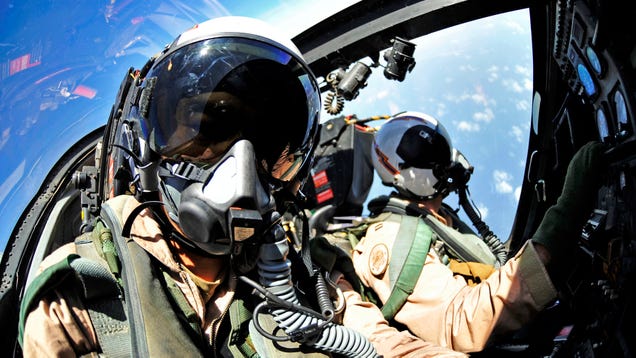

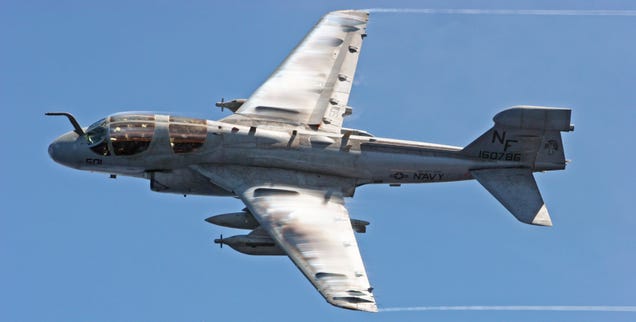
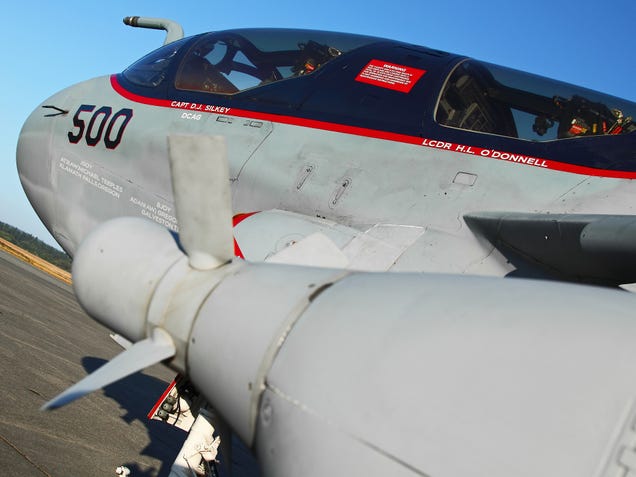


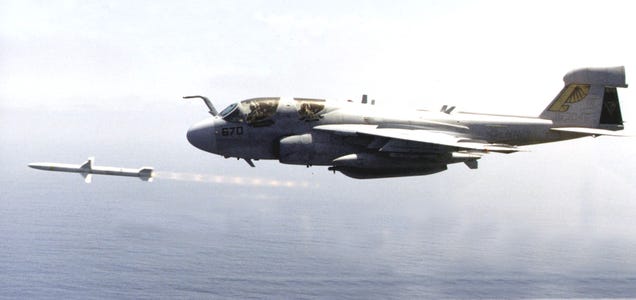
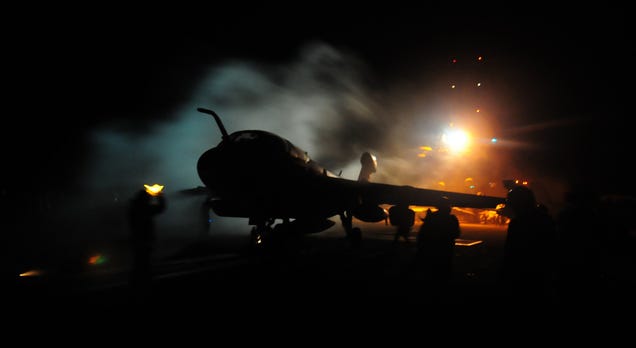
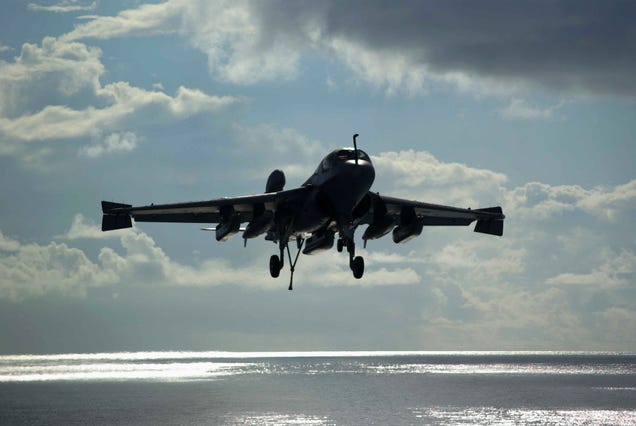
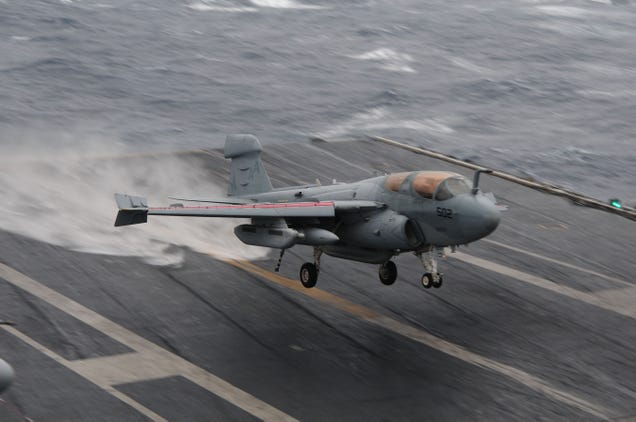
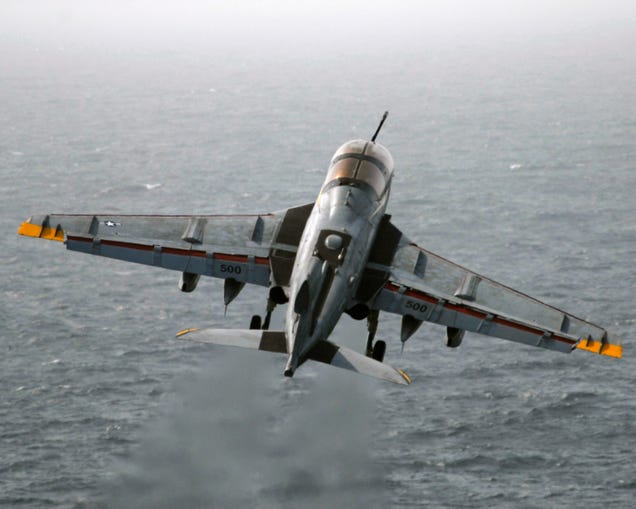
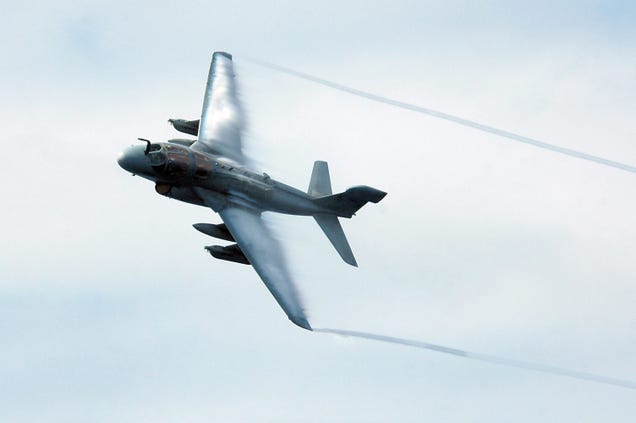
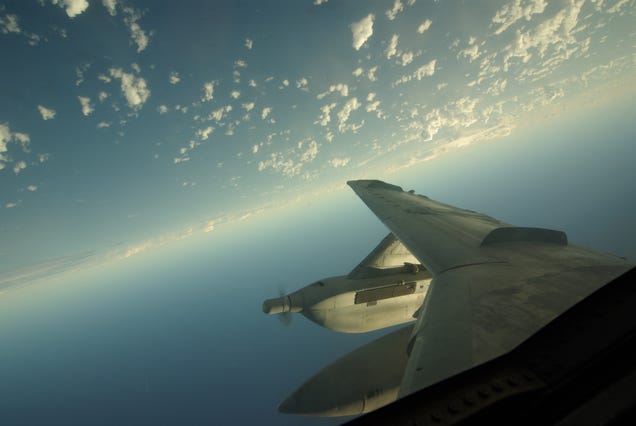
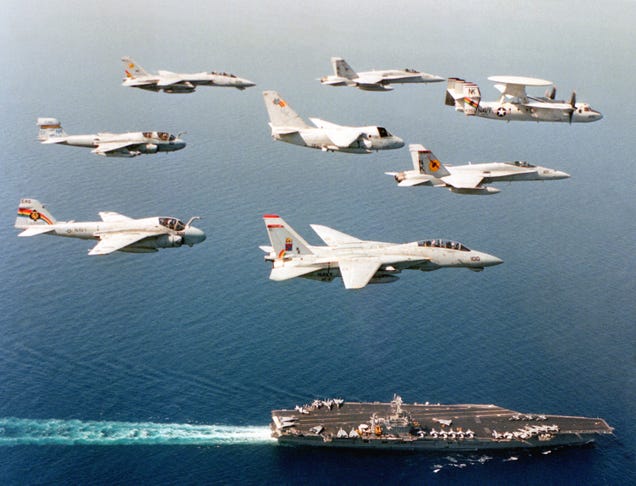


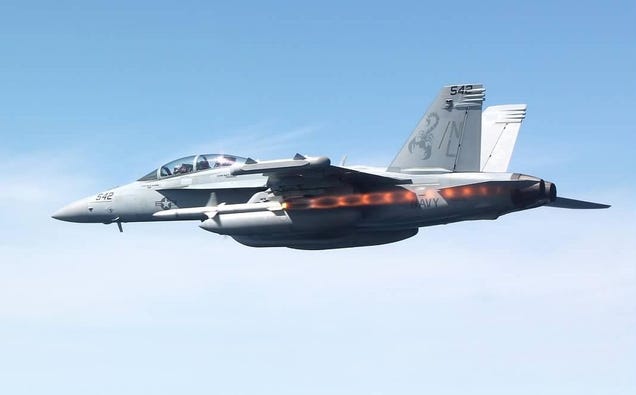
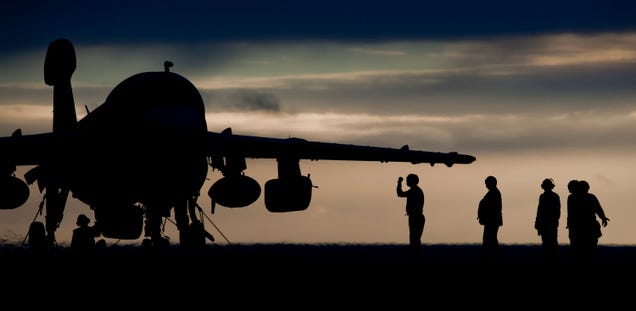
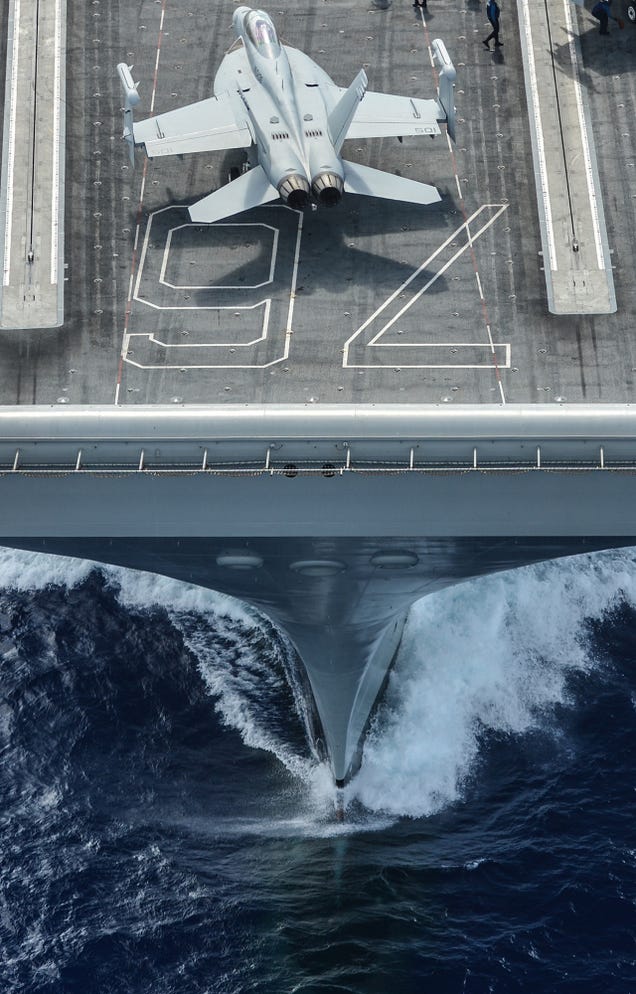
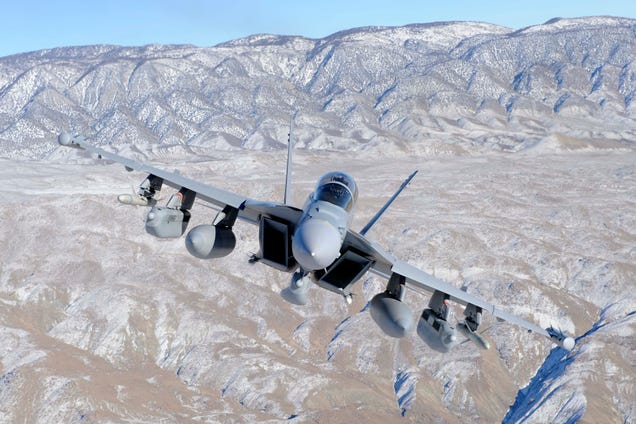
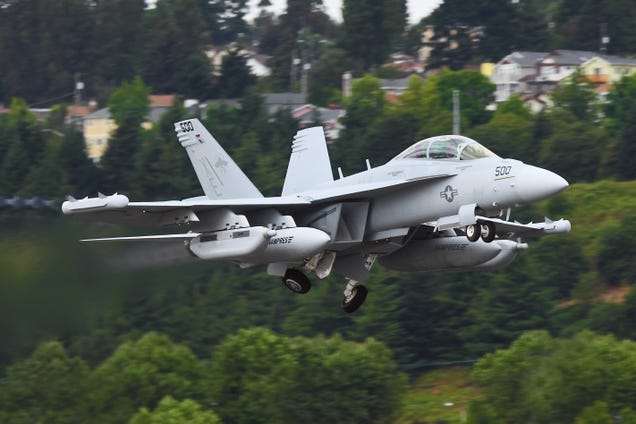
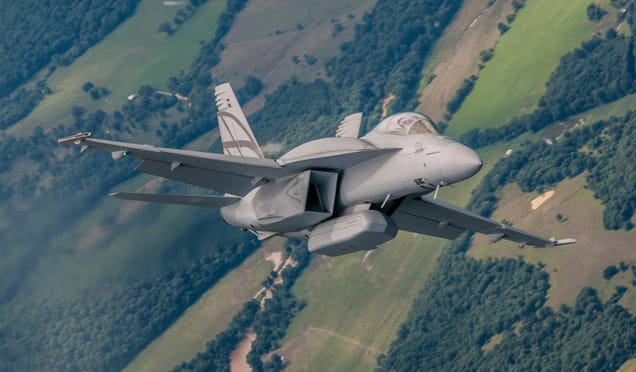
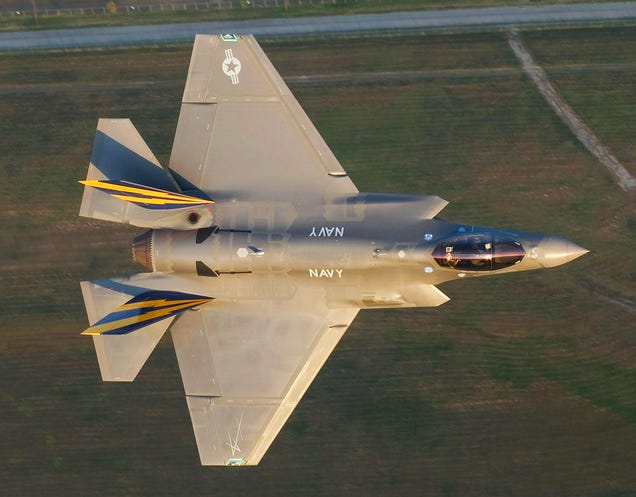
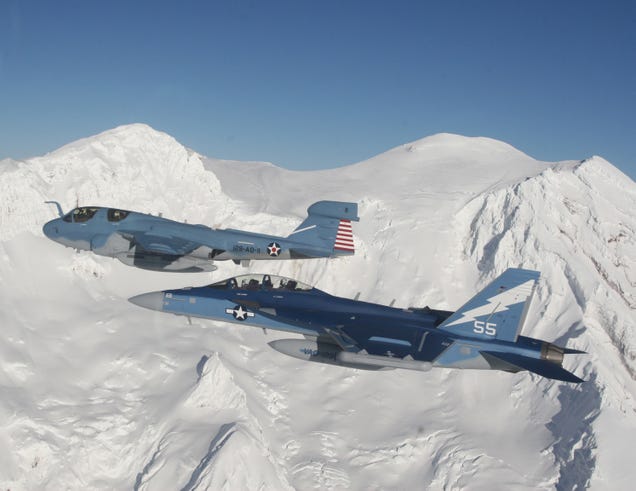
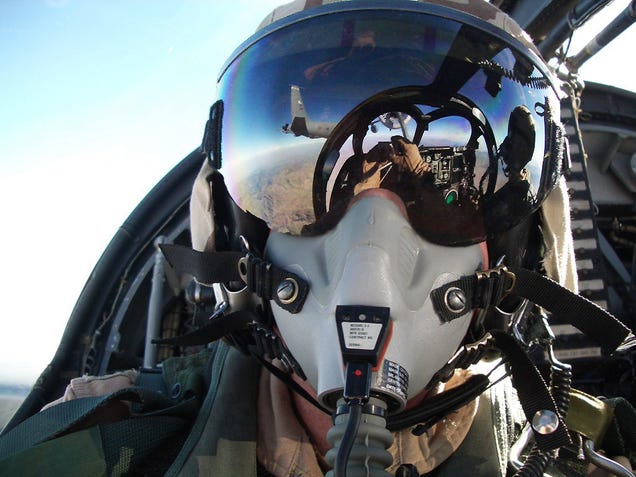
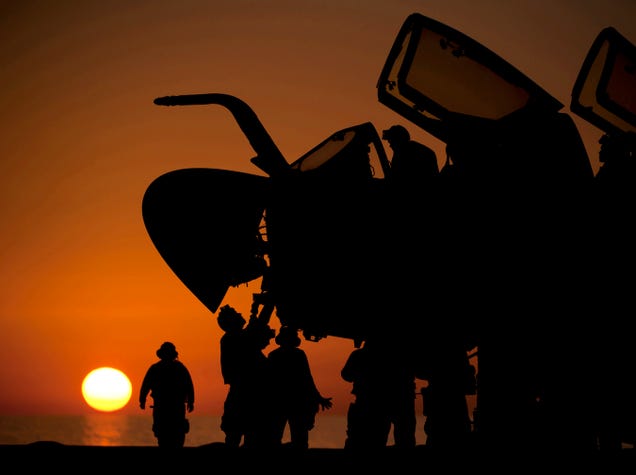
Комментариев нет:
Отправить комментарий